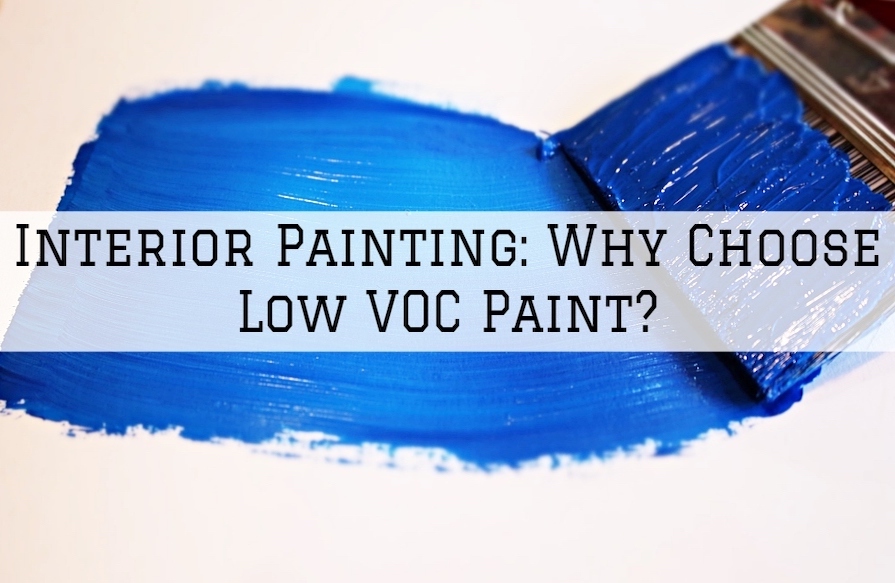Interior Painting in Omaha, NE: Why Choose Low VOC Paint?
July 26th, 2019 | 2 min read
By Bill Carlson

Having the interior of your home repainted is an enjoyable and rewarding task when done the right way. Often, the first step is choosing the right paint that matches the surface and does the job right. In most cases, homeowners pay more attention to the paint color and how it blends into their current color scheme. However, another property of paint often receives less attention and consideration –volatile organic compounds.
Volatile organic compounds, or VOCs, are found in most paints. And unfortunately, they're harmful to people in your home, as well as the environment. This is why we recommend that you use low VOC Paint when repainting your interior in Omaha, NE.
What Are VOCs?
Most paint products have some levels of volatile organic compounds. The VOCs are dangerous carbon-based gases that are released by the paint as it dries. They might also emanate from the paint even years after it has dried.
Environmentalists point out that VOCs deplete the ozone layer, which is terrible for all of us. Latex paints generally tend to have lower VOC compared to oil-based or enamel paints. But most homeowners are much more comfortable if they used low VOC, ecofriendly paints.
What Is Low-VOC Paint and Why Does It Matter?
You're probably familiar with the "fresh-paint smell" that often floats around for days after you've painted - it makes any space seem brighter and cleaner, right? Well, that smell is associated with the toxic VOC chemicals that the drying paint emits.
VOCs can cause health issues, especially for those with asthma and allergies. According to the U.S. Environmental Protection Agency, they're a significant source of indoor air pollution. For this reason, low-VOC and Zero-VOC paints have grown in popularity in recent years, as more homeowners realize how harmful the VOCs can get.
The EPA regulates the amount of VOC allowed in paint, and they have limited it to 250g/l for petroleum-based paints. As earlier mentioned, latex paints are typically low VOC paints and contain little to no heavy metals or formaldehyde. These are generally not regulated, and they usually carry VOC levels of about 50g/L or less. Interestingly, even some of the zero-VOC paints still contain small VOCs, though typically less than 5g/L.
All VOCs can cause headaches, nausea, dizziness, and other health hazards, including permanently damaging the kidneys. The only way to reduce the danger of VOCs is to choose low VOC paints instead of regular paint. Many paint companies have developed low-VOC and Zero-VOC paints and color additives, which you can choose from. Additionally, the price of low-VOC paint has significantly dropped in the last few years and will most likely keep dropping as companies produce more eco-friendly paints in the future.
The low VOC paints have very low toxic emissions and impact less on the room's air quality. Low VOC paints are typically odorless or have very little odor, which reduces allergy-causing toxins. As a result, people or your family members with chronic allergies will have a much easier time inside the room.
The Bottom Line
The health hazards of regular paints are not as scary as they may sound in this article, which is why many homeowners are still using regular paint to repaint their interiors. However, with extended exposure, high VOC paints may affect the health of you or your loved ones. While low-VOC and Zero-VOC paints might cost a little more than regular paint, they're worth their cost in the long run. Here is a link to an article that gives you information on what paints you can buy that are low or no VOC!
If you need help picking the best low-VOC paints and repainting your home interior in Omaha, Nebraska, Brush & Roll Painting can help! To get started, book a free estimate below or give us a call at 402-932-9764 for more details.
Bill is the owner and operator of Brush & Roll Painting.
Topics:

